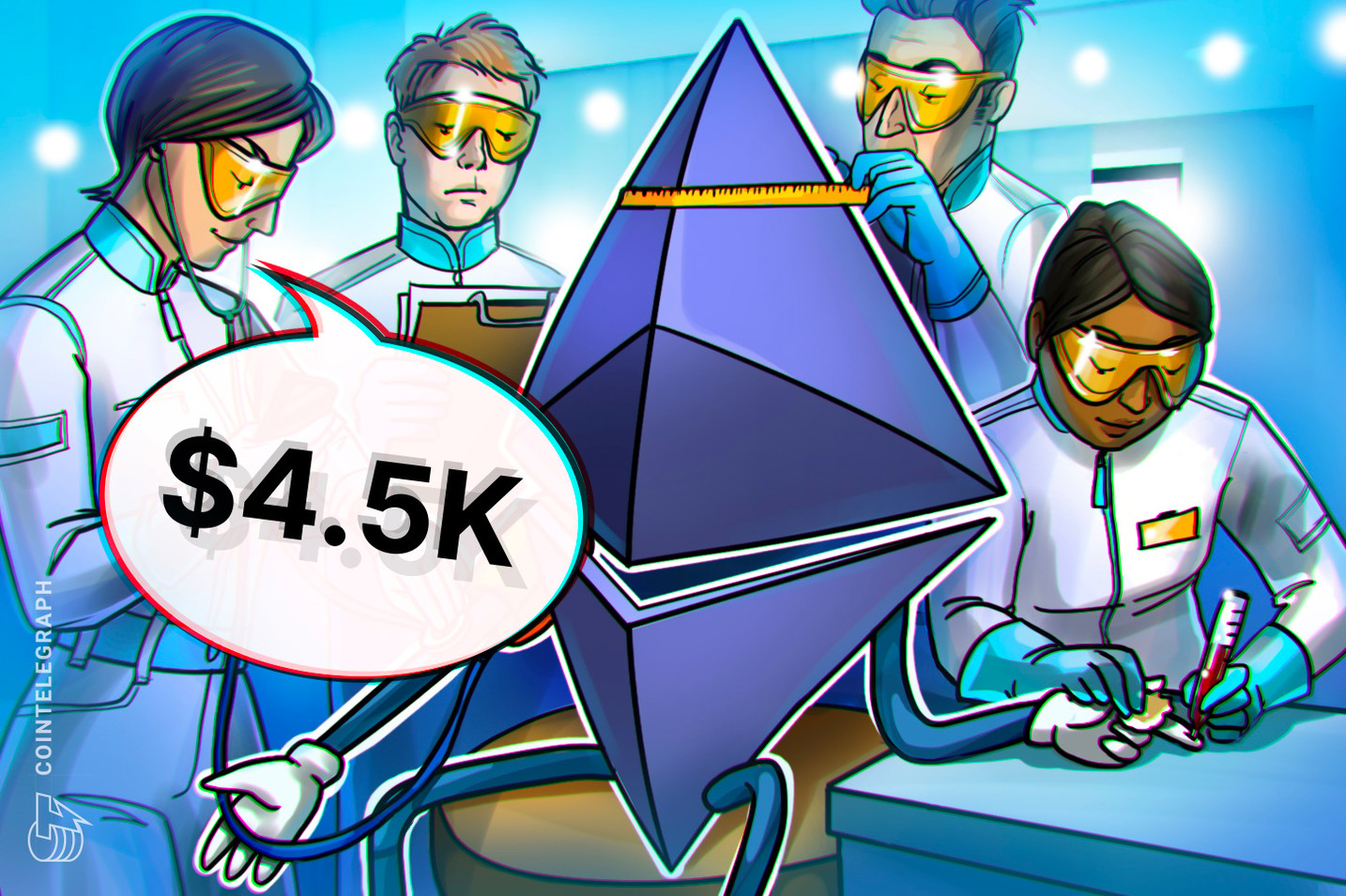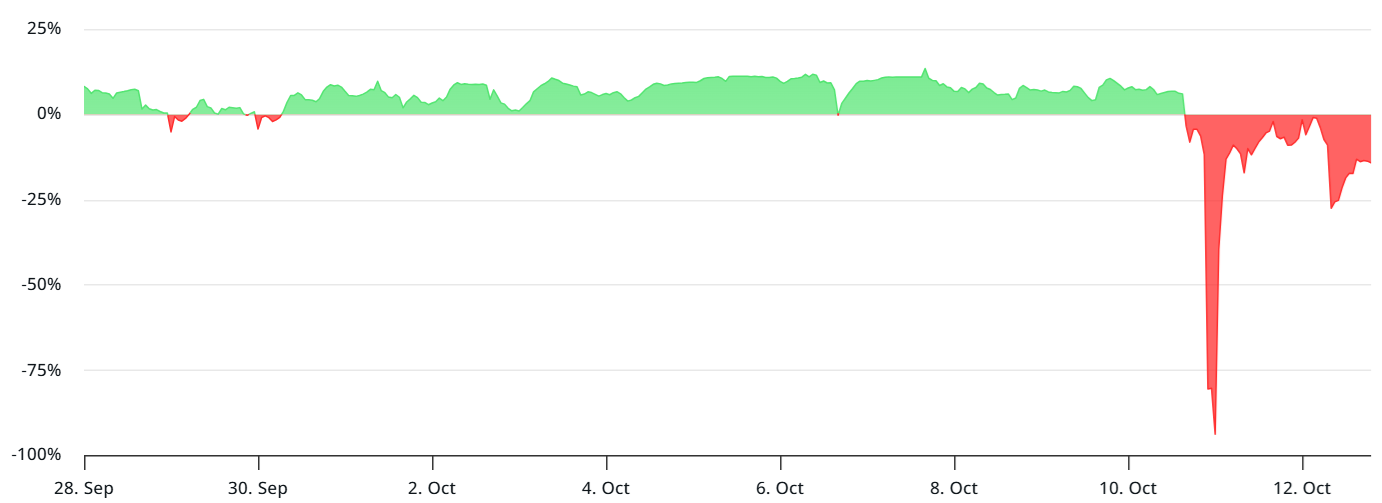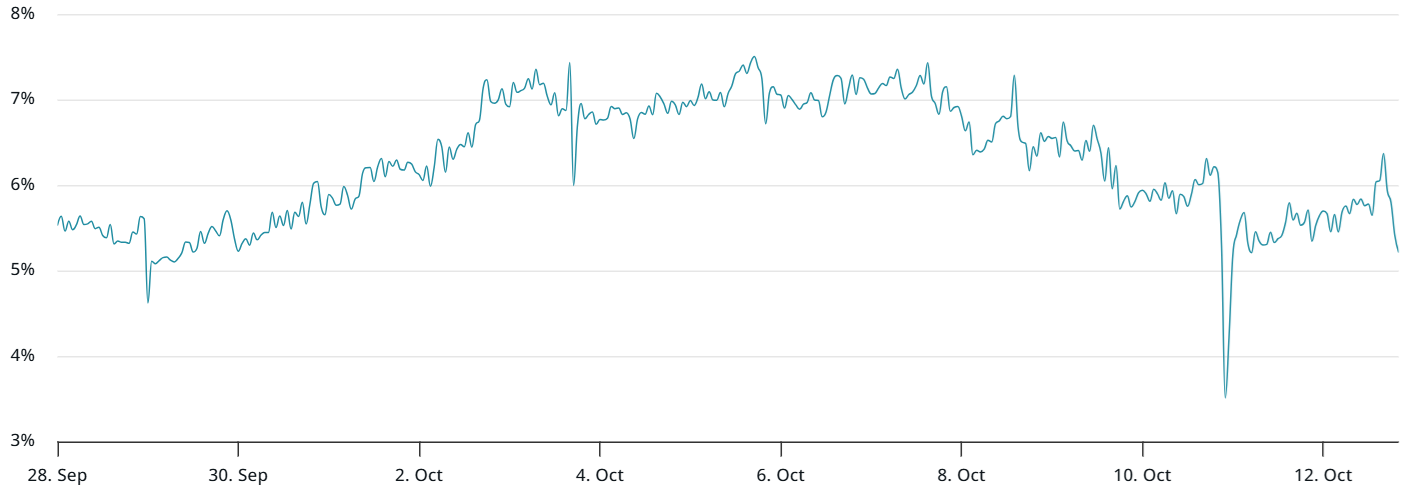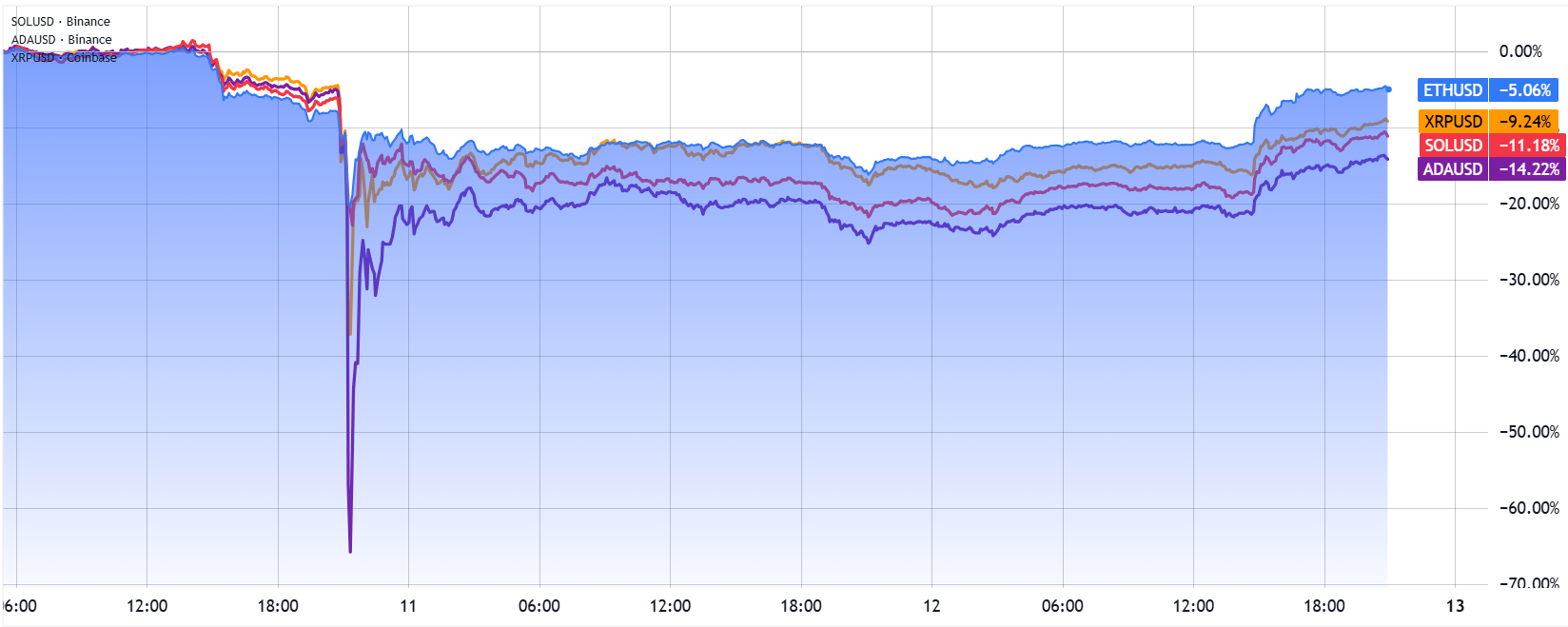
Ethereum Eyes $4,500 Target as Futures Markets Recover from Recent Crash
Ethereum's value has rebounded significantly following a market flash crash, signaling potential stabilization in futures markets.
Ethereum’s price has demonstrated a notable recovery following a flash crash that caused significant market disruptions. As fears in the market subsided, derivatives began to stabilize, suggesting that Ether may be on a trajectory toward the $4,500 mark.
Key Insights:
- The distortions in ETH’s perpetual contracts are diminishing, with monthly futures reflecting neutral conditions alongside lowered short-term market anxiety.
- Options trading indicates a balanced demand among both bullish and bearish tactics, portraying a robust derivatives market.
- During the recent downturn, ETH outshined many alternative cryptocurrencies, underscoring its resilience and encouraging bullish trends.
Ether (ETH) regained the $4,100 threshold on Sunday, alleviating some distress from a drastic 20.7% crash observed on Friday. The repercussions of $3.82 billion in leveraged long liquidations had a lingering effect on ETH derivative markets, yet four key elements imply that Ether’s rebound from the $3,750 support might signal the end of this short-term downturn.
 ETH perpetual futures annualized funding rate. Source: laevitas.ch
ETH perpetual futures annualized funding rate. Source: laevitas.ch
Notably, the funding rate for ETH perpetual futures plunged to -14%, indicating that bearish traders are incurring costs to maintain their positions—an unsustainable scenario over prolonged periods. This concerning trend likely hints at an unease among certain market makers or exchanges regarding potential solvency issues. Regardless of whether such fears are justified, trading activity remains cautious until confidence is fully reinstated.
ETH Futures Indicate Recovery Despite Market Confusion
Doubt remains whether exchanges will return funds to clients due to mishaps linked to cross-collateral margin and oracle pricing strategies. In light of this uncertainty, Binance has pledged $283 million in reimbursements, while other claims are still being evaluated.
Traders are expected to approach the market with caution until a thorough investigative summary has been disseminated. Wrapped tokens and synthetic stablecoins suffered significant parity challenges, leading to margin drops of up to 50% in mere moments.
 ETH 60-day futures premium against standard spot markets. Source: Laevitas.ch
ETH 60-day futures premium against standard spot markets. Source: Laevitas.ch
Nevertheless, ETH’s monthly futures quickly absorbed the shock within just two hours, rapidly achieving the essential 5% premium required for a neutral market environment. Therefore, the decrease in demand for leveraged long positions in perpetual contracts probably reflects inadequate product engineering rather than prevailing bearish sentiment.
This imbalance in the derivatives market may linger until market makers regain their confidence—a process which could extend over several weeks or even months and should not be interpreted as a negative indicator for ETH’s momentum.
ETH options put-to-call ratio at Deribit, USD. Source: laevitas.ch
Options markets for Ether showed no signs of distress or spikes in demand for bearish strategies. Trading volumes remained consistent over the weekend, with a slight prevalence in call (buy) options as opposed to put (sell) options, indicating a balanced and healthy market.
This information contributes to alleviating worries regarding a collective cryptocurrency market downturn. A sharp surge in options volume would likely have been observed if investors were bracing for a substantial price decline. Thus, the event that triggered the abrupt liquidations and instability within ETH derivative markets was entirely unexpected.
Historical Performance and Competitive Positioning of ETH
 ETH/USD compared to XRP/USD, SOL/USD, ADA/USD. Source: TradingView
ETH/USD compared to XRP/USD, SOL/USD, ADA/USD. Source: TradingView
Significantly, several leading alternative cryptocurrencies faced intraday corrections far more pronounced than ETH’s 20.7% decline, with SUI dropping by 84%, Avalanche (AVAX) by 70%, and Cardano (ADA) by 66%. While Ether dipped 5% over the previous 48 hours, most competitors remain approximately 10% below their levels before the crash.
Moreover, Ether’s separation from the broader altcoin arena emphasizes the strength attributed to $23.5 billion in spot exchange-traded funds (ETFs) and $15.5 billion in options market open interest. Even as other contenders like Solana (SOL) vie for positions in the ETF market, Ether’s proven network effects and capability to withstand volatility continue to solidify its status as the preferred alternative cryptocurrency for institutional investment.
The prospects for Ether remain optimistic as trust in derivative frameworks gradually returns, bolstering a possible rebound towards the $4,500 resistance.



